The phillips screwdriver is oftentimes one of the most heavily used implements on your multitool. Phillips screws (also called crosshead screws) are much more common today than the previously dominant slotted screw. As such, having a good quality phillips screwdriver on hand is critical. How to go about including this important driver on a multitool has been a challenge, solved a surprisingly large number of different ways.
The following is a sample of phillips screwdriver blades on a variety of different multitools. Occasional notes and commentary have been added.
Early PST
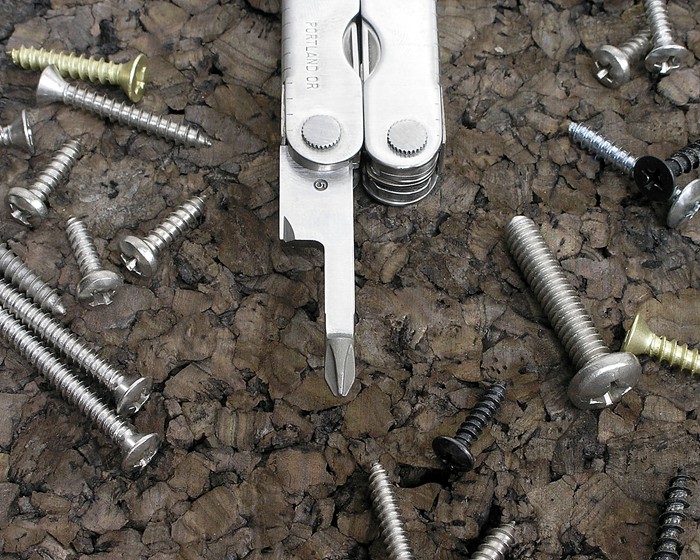
25 years ago the first Leatherman
PST's had a pretty decent phillips on them. The body and shank were polished, so it would fold out smoothly, but the head was left rough, allowing it to "grip" a stubborn screw better. The only flaw in the design of those first phillips was their tendency to fold up under pressure. Ouch!
Later PST
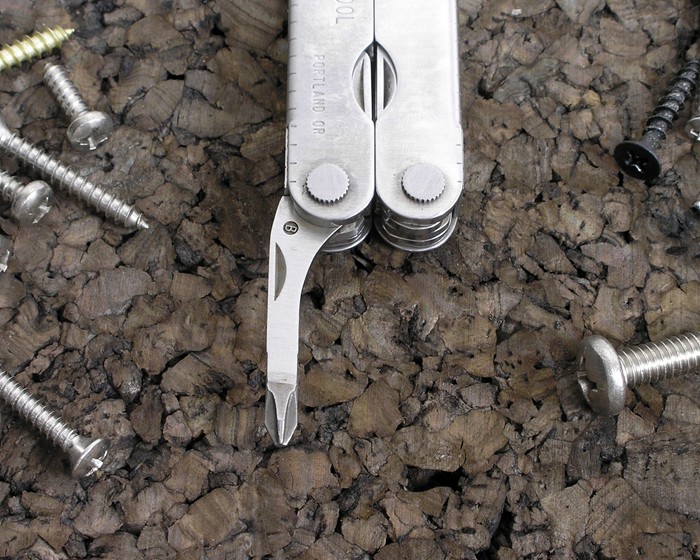
In response, Leatherman started equipping their tools with a "bent" or offset phillips. Under pressure, the forces work to hold the phillips open, rather than allow it to fold up.
Original Wave

Later, when the
Original Wave came out, it used the same "offset" principle.
Pocket Power Plier

SOG uses a phillips screwdriver that is very similar in design to the original PST. On the old non-locking
PowerPlier and
Pocket PowerPlier, you can see how this design is susceptable to folding under pressure.
PowerLock
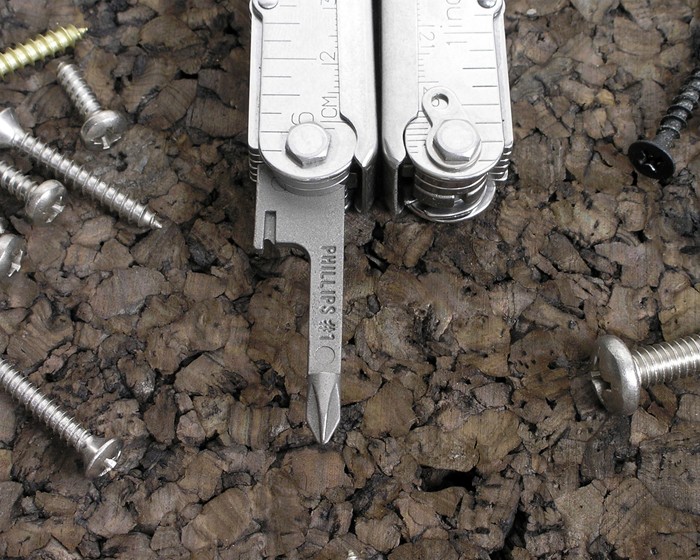
The phillips screwdriver on the SOG
PowerLock locks open, so there is no longer a concern about fold up. For such a large tool as the PowerLock though one might expect SOG to equip it with a larger #2 phillips driver instead of the little #1. The SOG
PowerAssist and
PowerDuo have the same #1 Phillips screwdriver as well.
Multi-Plier
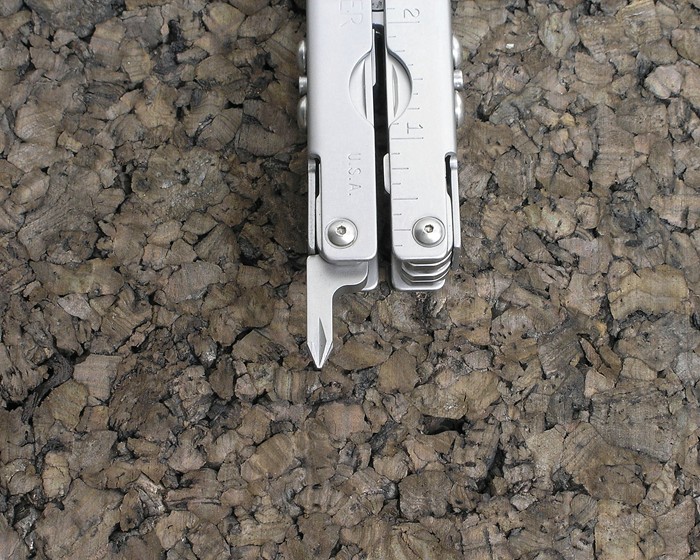
Original Gerber
Multi-Plier tools came with a full square phillips. The head size was a #2, and the solid shank meant they were stronger than their competitors. Offset heads meant they didn't fold up. The downside was their short length, and the fact that the full width shank took up space that could have been used for other blades.
MP600

The next generation of Gerber
Multi-Plier (the
MP400 and
MP600 series) addressed these concerns somewhat, giving the phillips a slightly longer reach.
Diesel
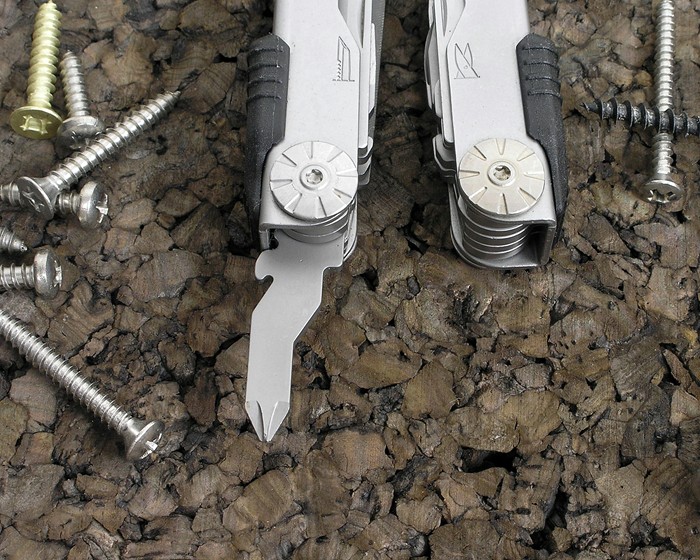
After that from Gerber came the
Diesel, and on it we see a flattened phillips driver. This allows more blades to fit in the handle, but the design does not seem to grip screws as well.
Flik
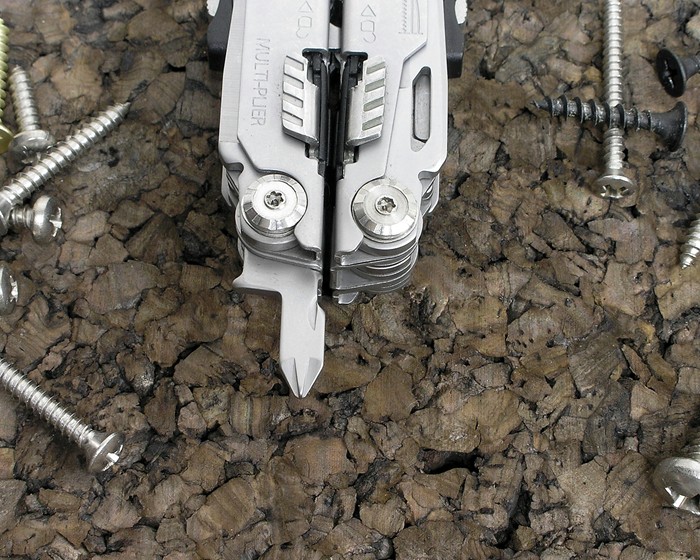
Most recently, it seems as if Gerber engineers have taken a step backward. The new
Flik tool has a flattened phillips driver like the
Diesel, and the length has been reduced to an almost ridiculous stubbiness.
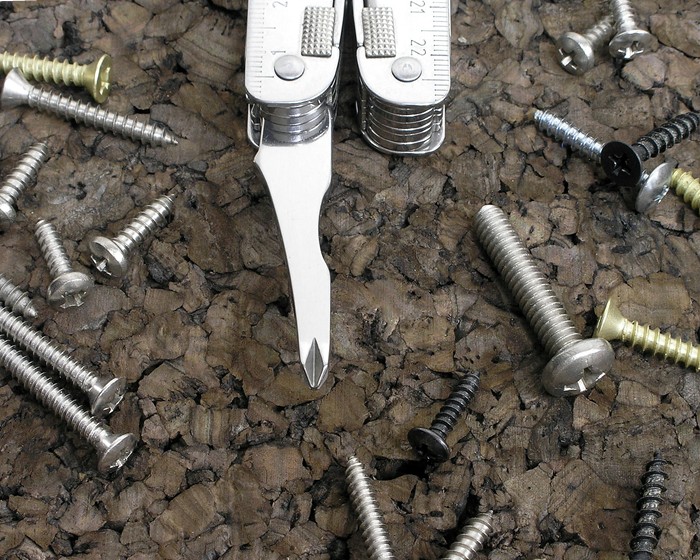
At Victorinox they had of course been making screwdrivers for a long time prior to the
SwissTool. The phillips driver has plenty of reach, a full head, and a reduced shank. All good things. Exactly how this driver is manufactured is uncertain. It appears as if the head area has been "squashed", with the metal from the grooves being displaced out into the teeth, flaring the end somewhat.

A few years later the
Swisstool Spirit arrived using the same proven manufacturing technique on its Phillips screwdriver.
Complaints have been made stating that the high polish on Victorinox screwdrivers causes them to slip easier on tight screws. Another observation is that the Victorinox Phillips don't seem to fit snugly in many Phillips screws. Perhaps there is some difference between European and American Phillips standards. New Wave
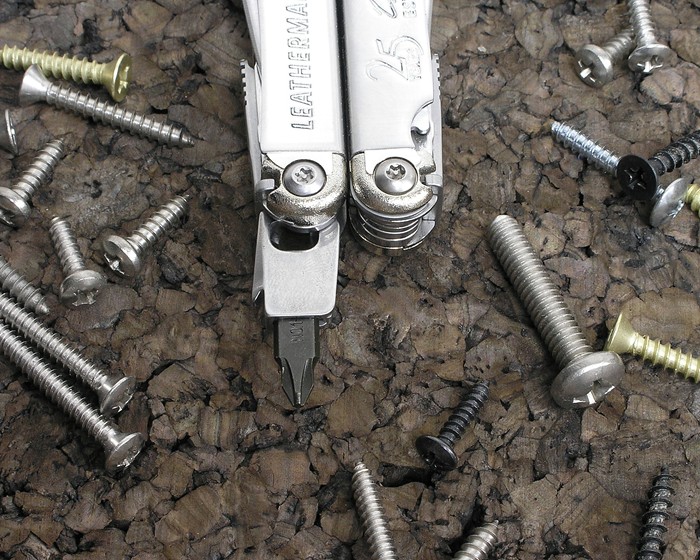
Meanwhile Leatherman continued to innovate. When the 2004
New Wave and
Charge models came out they are equipped with an interchangeable bit driver along with proprietary flattened hex bits. A variety of different bits are available. Some like the versatility this provides. Others dislike the limited reach this system restricts them to. The larger Leatherman
Surge utilizes the same bit exchanger system as the New Wave and Charge series.
Kick
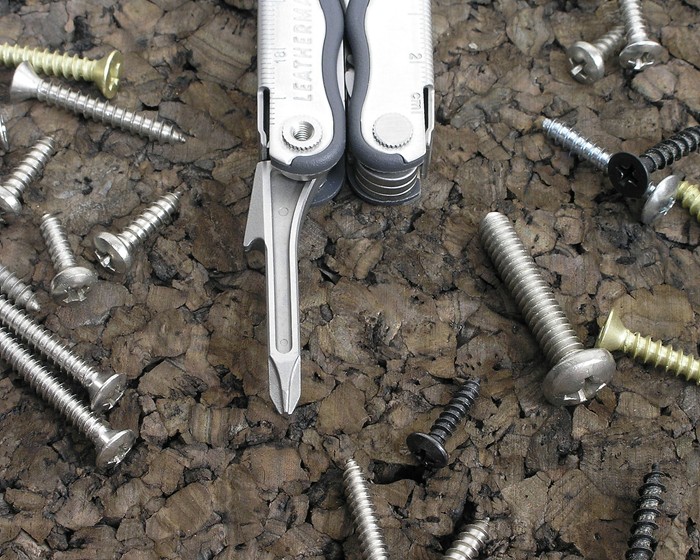
At about the same time Leatherman introduced a new generation of dedicated drivers on some of its multitools, like the one (shown at left) on the
Kick. It has a good reach, a #2 head that fits into screws properly, a textured finish, and is properly offset. The same driver appears on the
Fuse and
Blast, as well as the newer
Rebar.
Core
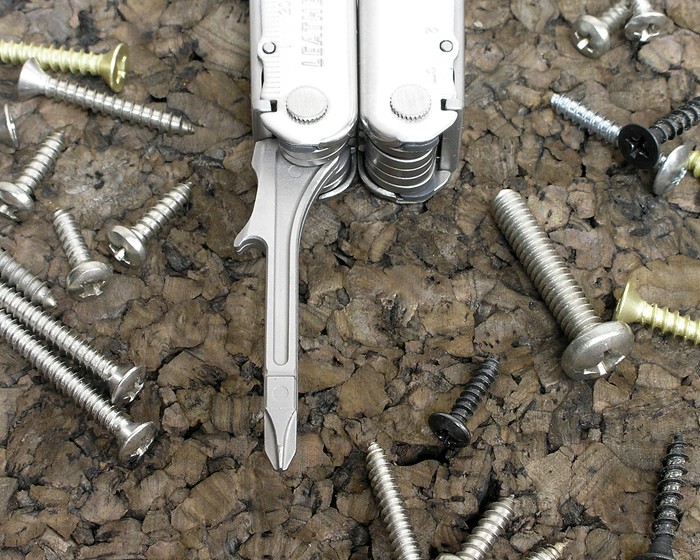
A similar dedicated Phillips is on the
Core, except that this one is longer still. The same driver appears on the newer
Super Tool 300.
Kick vs. Core

Shown at left is a length comparison shot, with
Kick on the left and
Core on the right.
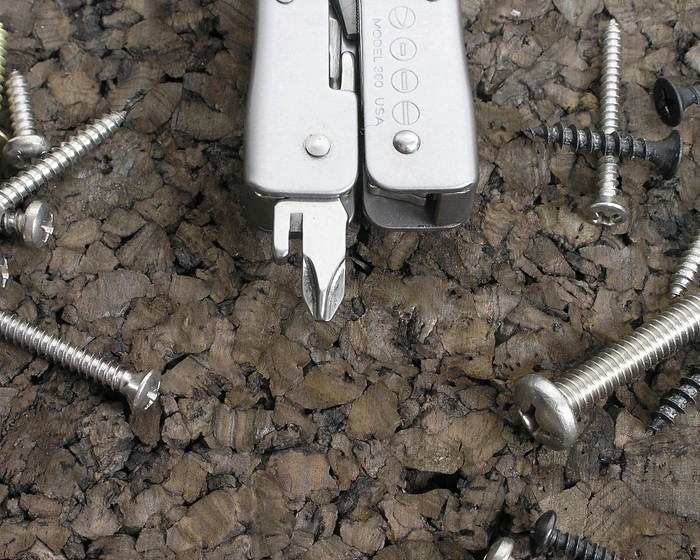
The
BuckTool 360 originally came out with a short, three-toothed Phillips that was flat on the back side.
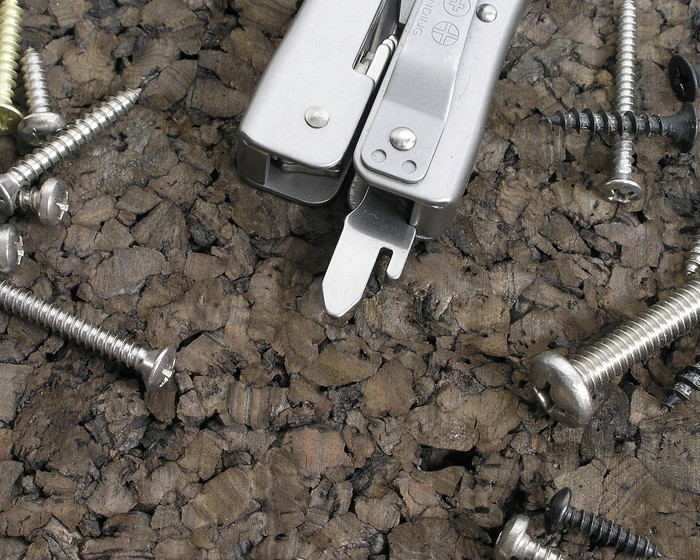
Backside of an early
BuckTool 360 Phillips at right. Apparently this design allowed them to squeeze more blades in.
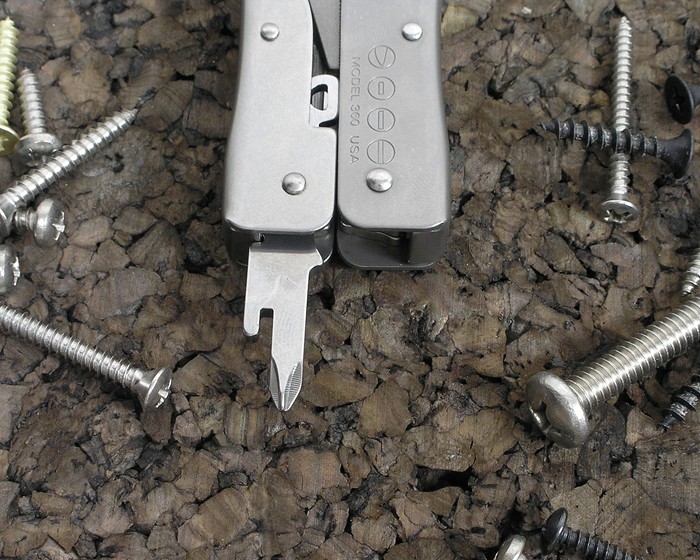
Later models of the
BuckTool 360 have a full four-toothed Phillips. This style also has little gripping ridges on the teeth, which were intended to grab the screw better. It was still rather short in length though.
Bear Jaws 155
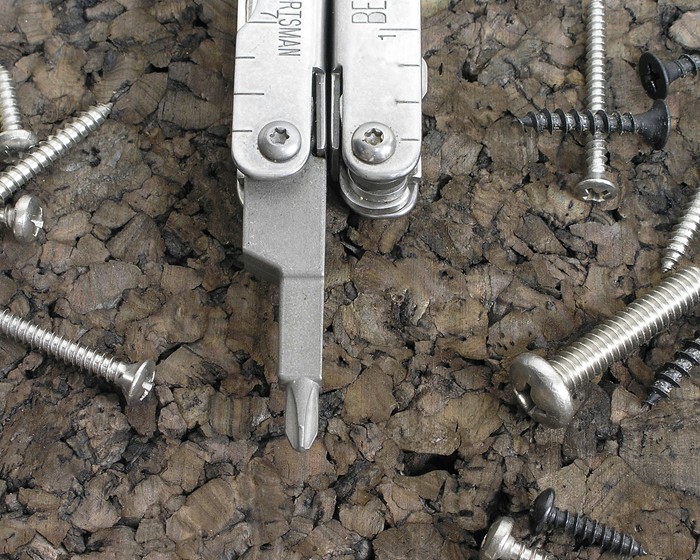
Phillips drivers on
Bear Jaws tools are massive, solid cast affairs that take up a considerable amount of thickness in the handle. This leaves less space for additional blades.
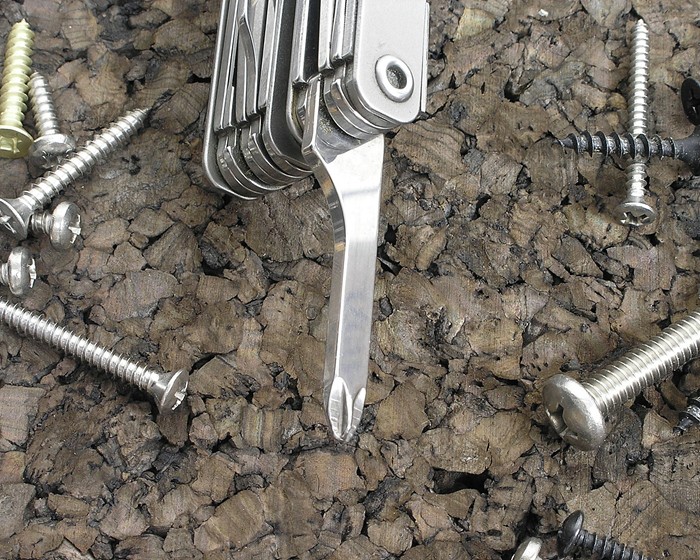
Schrade Cutlery's
ST1 Phillips screwdriver is somewhat flattened, with two full teeth and two shallow teeth. It has decent length to it, and gripping ridges like we saw on the
BuckTool 360.
A100
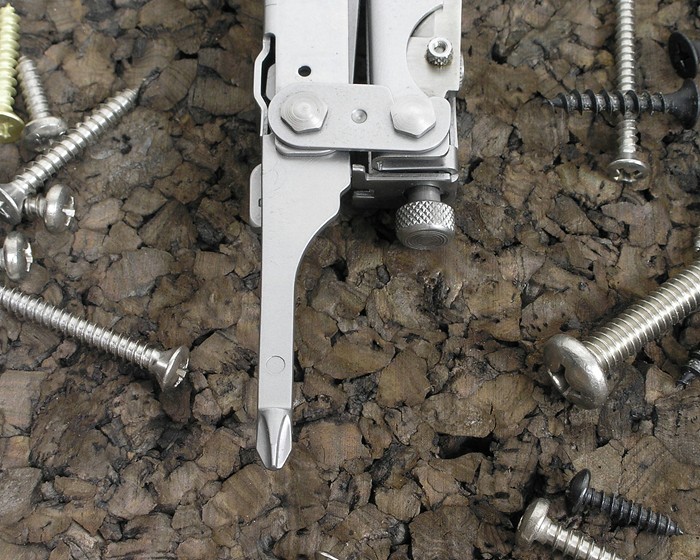
The Phillips driver that Kershaw included on their
A100 Multi-Tool is reminiscent of the early Leatherman or current SOG style, with its full #1 head and reduced width shank. The offset direction is correct though, which is important in a non-locking multitool.